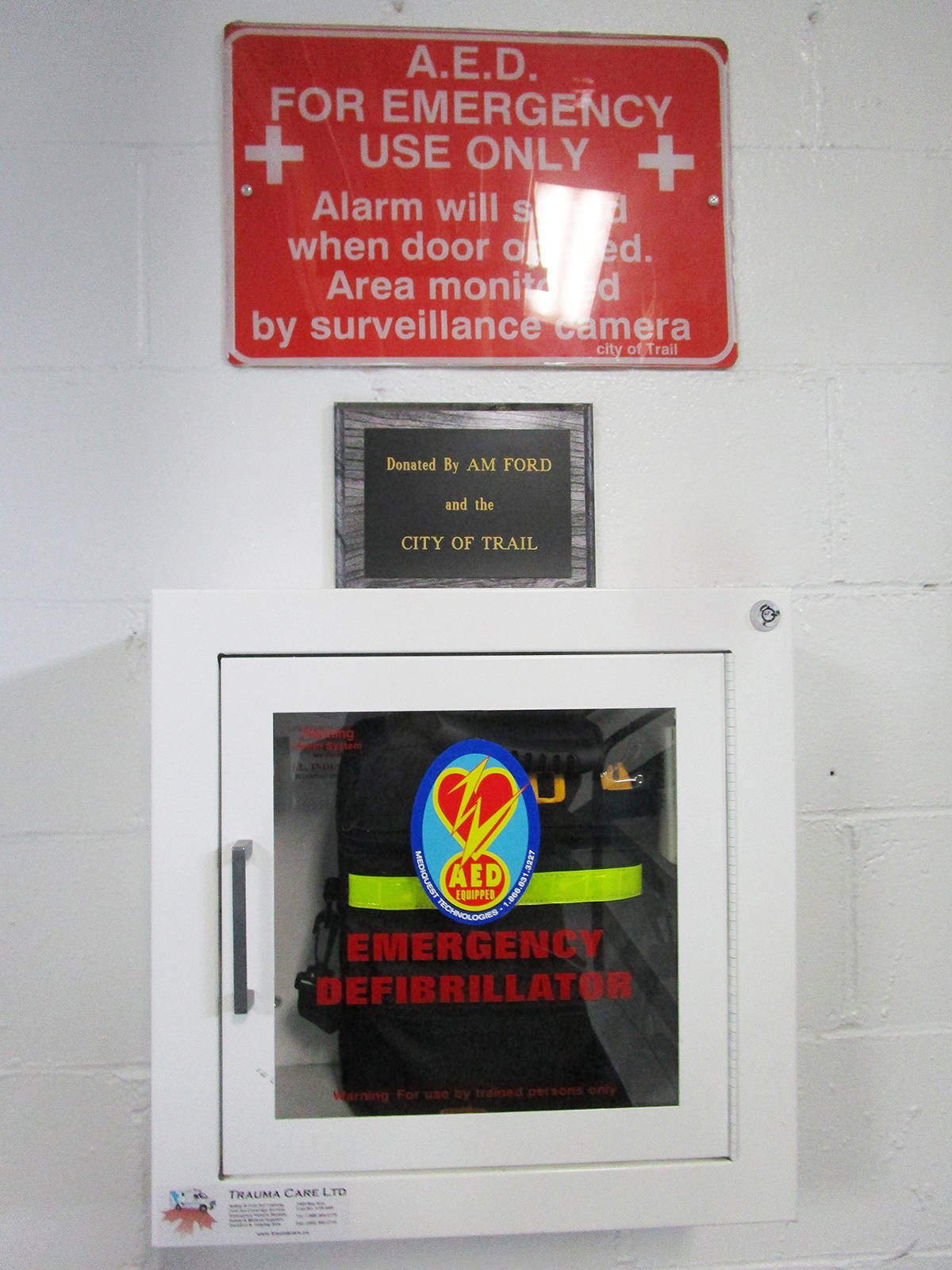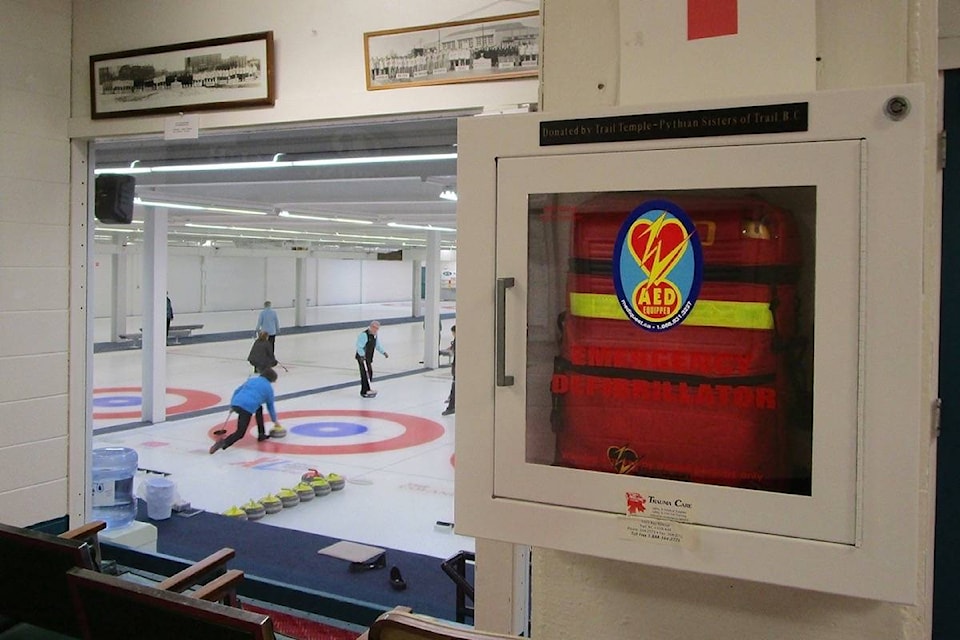An automated external defibrillator (AED) has long been touted as one of the most important tools in saving the life of someone suffering sudden cardiac arrest.
The most important element, of course, is that the device powers on when it needs to.
Sports arenas and community halls from Rossland to Trail and the Beaver Valley have housed the portable machines for more than 10 years now. There’s no reports that an AED has been used in those locations to date, but that’s the point - it’s there in case of emergency.
Recently, concern about AED maintenance reared up after a close call in the Lower Mainland.
In mid-January, a middle-aged man suffered a heart attack after playing hockey in the Pitt Meadows arena. His team mates began CPR and others raced to the arena’s portable defibrillator, but the batteries were dead.
The man did pull through because people on site knew CPR, and fortunately, the arena had a second defibrillator which did work.
Most AEDs emit clear voice prompts and have legible and visual instructions, so they can be used by anyone, regardless of age or experience. Because they are battery charged, public access AEDs are generally checked once a month and in some municipalities, maintenance is reported online through the Heart and Stroke Foundation website.
The Pitt Meadows situation may have been a one-off. The arena’s management told the Maple Ridge-Pitt Meadows News the AEDs are checked once a month, and within that time frame, the batteries had died.
Rossland has a good daily solution to avoiding an untimely AED circumstance, like dead batteries.
The city has one defibrillator which is located in the arena during winter operations, then moves to the Rossland outdoor pool for the summer months.
“It sits in a glass case, so the light indicating battery power is visible, which the operator visibly inspects daily,” explained Kristy Calder, manager of recreation and events.
Routine battery change and any other maintenance recommended by the manufacturer is completed annually by city staff.
Warfield Centennial Pool also houses a defibrillator during the summer.
“Our pool manager takes care of it and is responsible for checks and maintenance,” Corporate Officer Jackie Patridge said. “And our lifeguards have been trained how to use it.”
The City of Trail has three AEDs in the Memorial Centre, confirmed manager Robert Baker.
One is located in the curling club, another is in the main lobby of the arena, and a third is located at the bottom stairs leading to the dressing rooms.
Baker says all three units are maintained by the aquatic coordinator and checked monthly by arena staff.
Montrose has an AED at its most popular facility - the village’s community hall.
“Our village staff checks it, records it, and confirms on the AED Heart and Stroke Foundation website on a monthly basis,” said Chief Administrative Officer Larry Plotnikoff. “These units are extremely important to have in public facilities.”
For a number of years Fruitvale has had a portable unit in the Memorial Hall. A second unit was installed on the lower floor when the senior’s gym was opened in 2015.
Both units are checked once a month by public works, then village staff completes an online report to the AED Heart and Stroke Foundation.
The regional district supplied a brand new AED to the Beaver Valley Arena last year.
The older unit was refurbished by the Heart and Stroke Foundation and is now in the first aid room at the Greater Trail Community Centre in downtown Trail.
Both devices are checked monthly and maintained by the regional manager of facilities and recreation.

